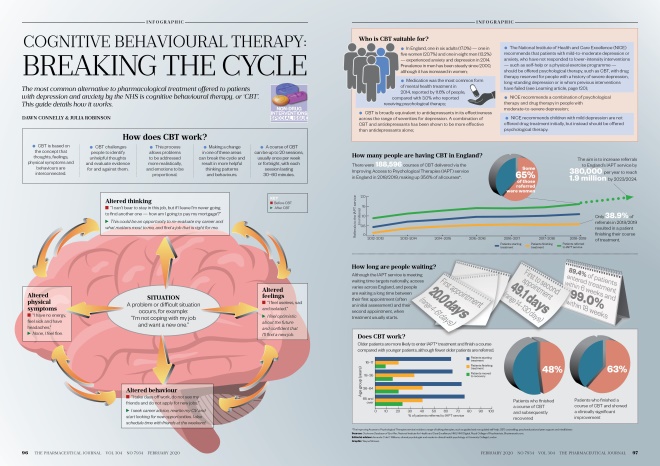
Source: Wayne Mclean / Shutterstock.com
Download the full print version of the infographic here.
How does CBT work?
- CBT is based on the concept that thoughts, feelings, physical symptoms and behaviours are interconnected.
- CBT challenges people to identify unhelpful thoughts and evaluate evidence for and against them.
- This process allows problems to be addressed more realistically, and emotions to be proportional.
- Making a change in one of these areas can break the cycle and result in more helpful thinking patterns and behaviours.
- A course of CBT can be up to 20 sessions, usually once per week or fortnight, with each session lasting 30–60 minutes.
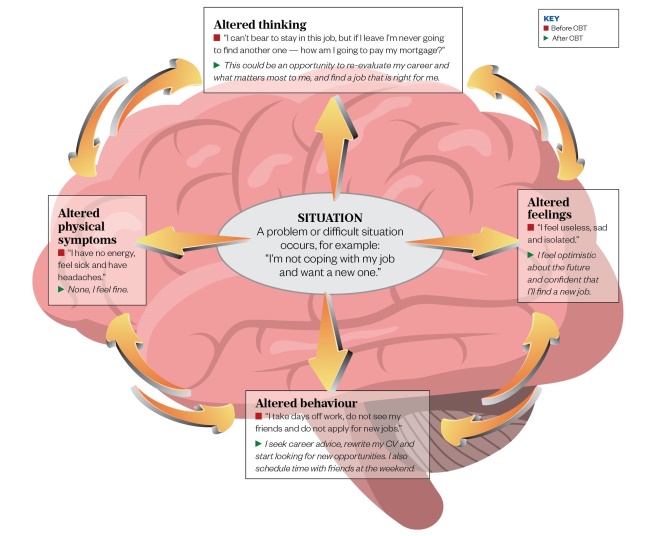
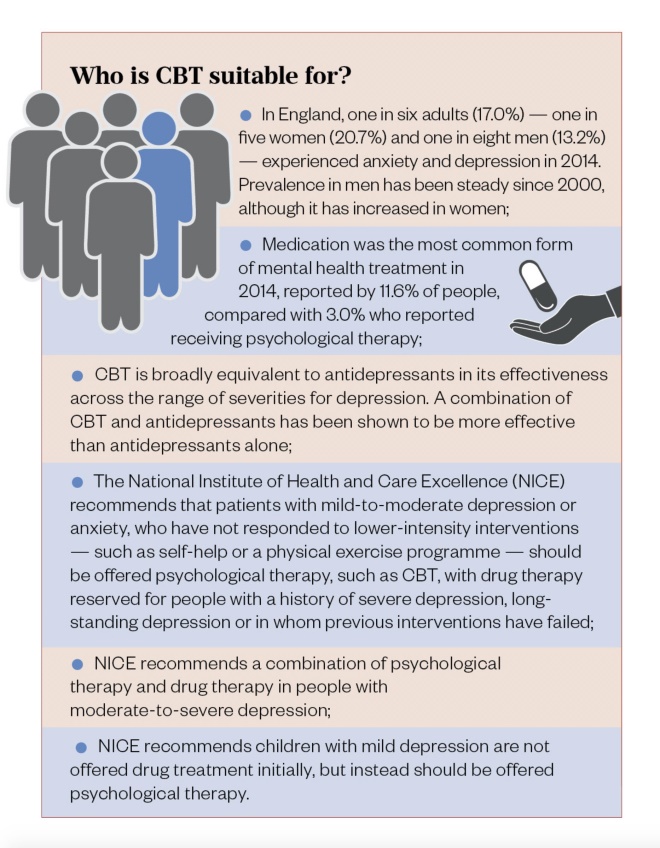
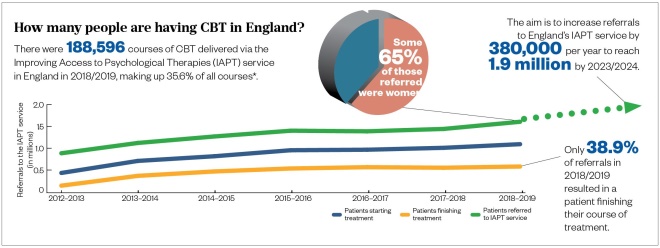
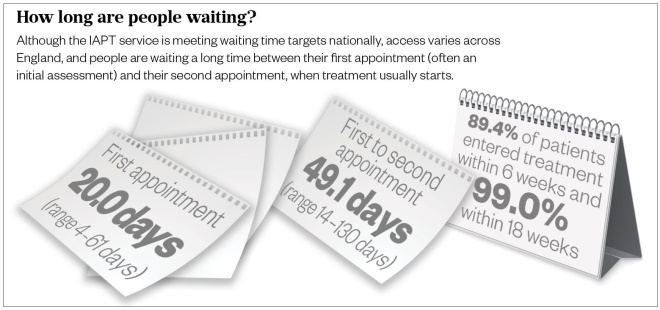
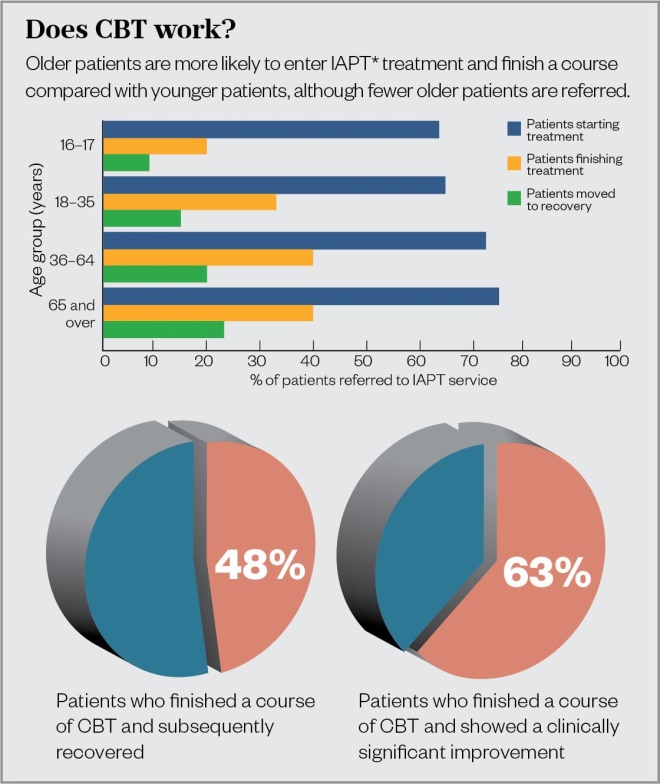
*The Improving Access to Psychological Therapies service includes a range of talking therapies, such as guided and non-guided self-help, CBT, counselling, psychoeducational peer support and mindfulness
References
Sources: National Institute for Health and Care Excellence, NHS, NHS Digital, Royal College of Psychiatrists, Shutterstock.com.
Editorial adviser: Amanda C de C Williams, clinical psychologist and reader in clinical health psychology at University College London
Graphic: Wayne McLean


